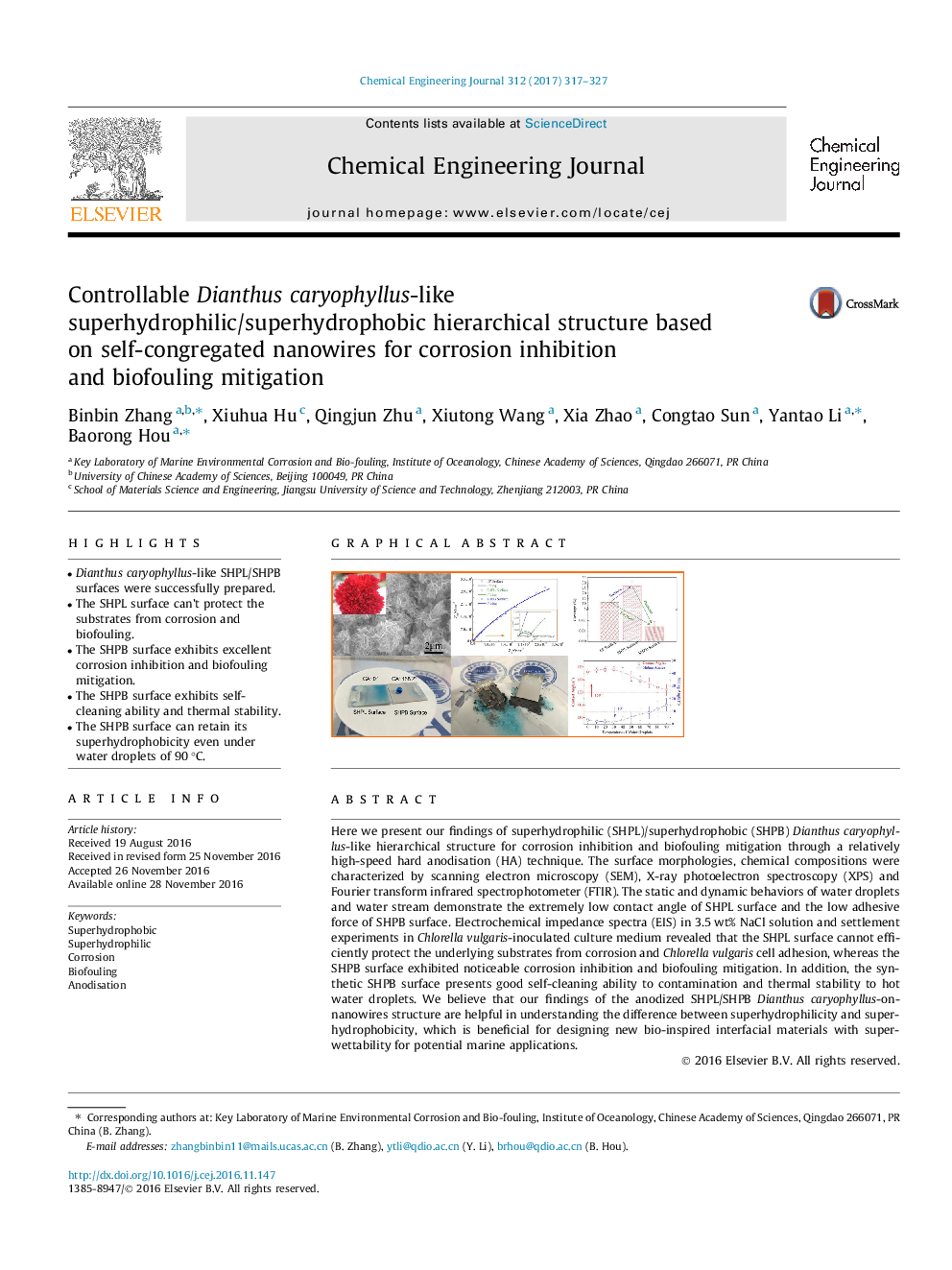| کد مقاله | کد نشریه | سال انتشار | مقاله انگلیسی | نسخه تمام متن |
|---|---|---|---|---|
| 6466515 | 1422966 | 2017 | 11 صفحه PDF | دانلود رایگان |

- Dianthus caryophyllus-like SHPL/SHPB surfaces were successfully prepared.
- The SHPL surface can't protect the substrates from corrosion and biofouling.
- The SHPB surface exhibits excellent corrosion inhibition and biofouling mitigation.
- The SHPB surface exhibits self-cleaning ability and thermal stability.
- The SHPB surface can retain its superhydrophobicity even under water droplets of 90 °C.
Here we present our findings of superhydrophilic (SHPL)/superhydrophobic (SHPB) Dianthus caryophyllus-like hierarchical structure for corrosion inhibition and biofouling mitigation through a relatively high-speed hard anodisation (HA) technique. The surface morphologies, chemical compositions were characterized by scanning electron microscopy (SEM), X-ray photoelectron spectroscopy (XPS) and Fourier transform infrared spectrophotometer (FTIR). The static and dynamic behaviors of water droplets and water stream demonstrate the extremely low contact angle of SHPL surface and the low adhesive force of SHPB surface. Electrochemical impedance spectra (EIS) in 3.5Â wt% NaCl solution and settlement experiments in Chlorella vulgaris-inoculated culture medium revealed that the SHPL surface cannot efficiently protect the underlying substrates from corrosion and Chlorella vulgaris cell adhesion, whereas the SHPB surface exhibited noticeable corrosion inhibition and biofouling mitigation. In addition, the synthetic SHPB surface presents good self-cleaning ability to contamination and thermal stability to hot water droplets. We believe that our findings of the anodized SHPL/SHPB Dianthus caryophyllus-on-nanowires structure are helpful in understanding the difference between superhydrophilicity and superhydrophobicity, which is beneficial for designing new bio-inspired interfacial materials with super-wettability for potential marine applications.
275
Journal: Chemical Engineering Journal - Volume 312, 15 March 2017, Pages 317-327